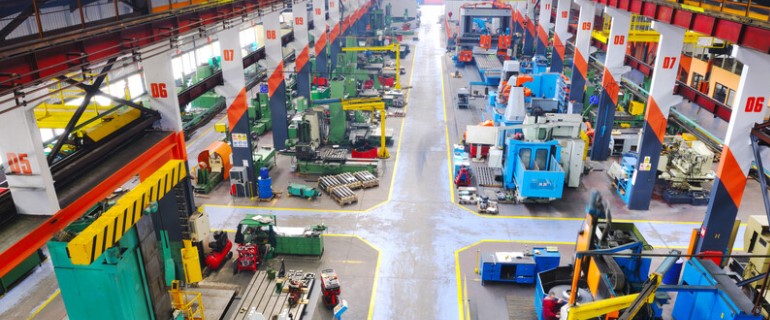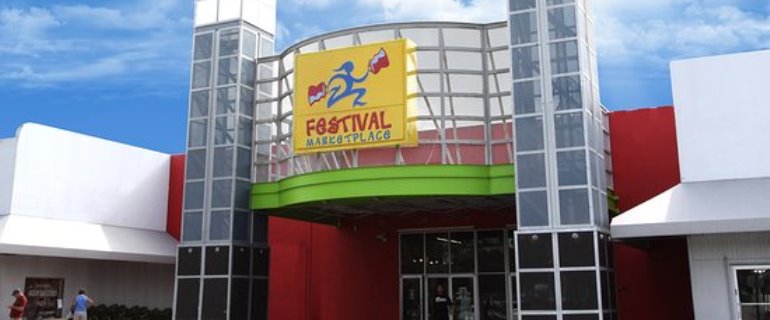New approaches from technology companies and co-working providers across North America and Europe are challenging occupiers’ and landlords’ office-space accommodation strategies, forcing players in more established sectors to adjust how they think about the size, physical form and operational function of their premises.
This transformation continues to encourage new development, which is racing to keep up with demand in some markets and being bolstered by a young, educated workforce gravitating to urban centres.
These are some of the key trends noted in Avison Young’s Mid-Year 2018 North America and Europe Office Market Report, that was just released.
The report covers the office markets in 67 metropolitan regions in Canada , the U.S., Mexico, the United Kingdom, Germany and Romania: Calgary, Edmonton, Halifax, Lethbridge, Montreal, Ottawa, Regina, Toronto, Vancouver, Waterloo Region, Winnipeg, Atlanta, Austin, Boston, Charleston, Charlotte, Chicago, Cleveland, Columbus, OH; Dallas, Denver, Detroit, Fairfield County, Fort Lauderdale, Greenville, Hartford, Houston, Indianapolis, Jacksonville, Las Vegas, Long Island, Los Angeles, Memphis, Miami, Minneapolis, Nashville, New Jersey, New York, Oakland, Orange County, Orlando, Philadelphia, Phoenix, Pittsburgh, Raleigh-Durham, Reno, Sacramento, San Antonio, San Diego County, San Francisco, San Jose, Silicon Valley, San Mateo, St. Louis, Tampa, Washington, DC; West Palm Beach, Westchester County, Mexico City, Coventry, London, U.K.; Manchester, Berlin, Duesseldorf, Frankfurt, Hamburg, Munich, and Bucharest.
“Against a backdrop of economic, geopolitical and financial volatility, the commercial property markets – for the most part – are functioning under relatively sound fundamentals,” comments Mark E. Rose, Chair and CEO of Avison Young. “Nowhere are we seeing more profound changes than in the office sector – especially in urban areas of major metropolitan markets across the six countries covered in our annual review. The impact can be seen on city skylines, which are changing rapidly as new construction picks up pace, driven by insatiable tenant demand from organizations adjusting their workplace strategies to a growing millennial workforce and their adaptability to innovative technologies.”
Rose continues: “At the same time, sectors that have historically accounted for a significant amount of demand for office space are now being both augmented and squeezed by ever-expanding technology and co-working industries. This phenomenon is being seen across national boundaries, particularly in markets with dense and growing urban populations.”
According to the report, of the 67 office markets tracked by Avison Young in North America and Europe, which comprise more than 6 billion square feet (bsf), market-wide vacancy rates declined in 38 markets, remained unchanged in seven, and increased in 22 markets as almost 74 million square feet (msf) was absorbed on an annualized basis.
The report goes on to say that construction cranes remained prominent fixtures across many skylines as nearly 74 msf of office space was completed during the 12-month period, while another 138 msf was under construction at mid-year 2018 – with 50% of the space preleased.
“It’s great to see so much confidence on the part of developers as they respond to the supply-demand imbalance in many markets,” says Rose. “As always in this industry, the inherent risk is that circumstances could change, resulting in an oversupply of product at the time of delivery. In many cases, this scenario is the result of external economic and geopolitical factors. This time around, however, the new influences of disruptive technologies and increasing co-working space availability are also affecting how and where people work, potentially impacting the office sector from within – and challenging conventional wisdom.”
Rose adds: “Generally sound office market fundamentals are being threatened on the North American front by ongoing NAFTA talks. In Europe, the looming Brexit deadline continues to dominate the headlines in the U.K., while in Germany, strong leasing activity continues to drive vacancy rates downward in all Avison Young markets. In Bucharest, Romania, development continues in response to demand.”
THE UNITED STATES
The U.S. office market has benefited from another strong 12-month period of positive economic indicators: Further business expansion and job growth, decades-low unemployment, and rising consumer and business spending. Business spending kept its momentum in the first half of 2018, boosted by corporate tax breaks even while the federal government moved toward greater isolationism and global trade uncertainty. As of June, U.S. unemployment averaged 4% and employment over the last 12 months grew by 2.4 million, supported by the office-occupying professional and business sector gaining 521,000 jobs.
The 5.2-bsf U.S. office market reported net absorption of 43 msf on the strength of gains in five markets each achieving more than 3 msf.
“In spite of this strong take-up, I’m not surprised that the overall vacancy rate remains elevated given the volume of construction underway and the continuing trend of more efficient space design,” says Earl Webb, Avison Young‘s President, U.S. Operations.
U.S. office market trends mirror those in Canada, registering an increasing impact from co-working firms. Occasionally, co-working companies have occupied large blocks of space in oversupplied markets, helping to keep vacancy in check, and the concept’s popularity with tenants has forced landlords to compete by adding conference rooms, tenant centers and social spaces.
Webb continues: “Flexible occupancy is key. We also see some national corporate tenants utilizing co-working space in order to control costs and create that flexibility. One co-working operator’s recent announcement that it is moving into brokerage operations could further disrupt the office market, and we’ll be watching that situation and other co-working developments as we head into 2019.”
The report goes on to discuss other recent and continuing trends, including the redevelopment of aging inventory and developers’ emphasis on offering transit-oriented mixed-use projects. Tenants continue to display a preference for amenity-laden buildings and geographies – an important recruiting strategy designed to appeal to the millennial workforce in the tight U.S. labor environment.
Notable Mid-Year 2018 U.S. Office Market Highlights:
- Five U.S. markets each achieved more than 3 msf of net absorption. San Jose/Silicon Valley and San Francisco together represented 29% of the U.S. total with net absorption of 7.5 msf and 5 msf, respectively. As well, a handful of U.S. markets recorded negative net absorption. Of those, Houston lost the most ground with negative 2 msf during the last 12-month period.
- Total vacancy in the U.S. was 12.1% as of June 30, 2018, a drop of 10 bps year-over-year. In spite of strong absorption, vacancy rates remained stubbornly high overall with the highest levels in Memphis(20.9%), Westchester County (19.5%) and Houston (18.3%). All but 13 of the 46 U.S. markets reported vacancy averaging more than 10%.
- Improvement was centered in the downtown inventory (1.7 bsf) with average vacancy falling to 11.2% at mid-year 2018 compared with 11.4% one year earlier, while the bigger suburban market (3.5 bsf) recorded no change in vacancy year-over-year (12.6%).
- Construction volume fell year-over-year although 96 msf remained under development across the U.S. In new projects overall, 53% of the space was preleased at mid-year 2018 compared with 49% one year earlier. The 379-msf Washington, DC region led the country with 11 msf underway. Demand for new product is high in Washington and preleasing in buildings under construction reached 69% by mid-year. This level was almost matched by New York, where 10.6 msf was under construction (47% preleased) at mid-year 2018.
- Completions in the 12-month period ending at mid-year 2018 totaled 57.8 msf, increasing slightly from the prior year’s total (55.2 msf). Dallas and Northern California’sSan Jose/Silicon Valley led the country by delivering 7.5 msf each, followed by Washington’s 5.1 msf of completions.
- Eleven U.S. markets reported asking rents that exceeded the downtown class A average of $48.04 psf full-service gross. Not surprisingly, tight leasing market conditions in Northern Californiaresulted in San Mateo ($84.96 psf), San Jose/Silicon Valley ($74.74psf), San Francisco ($76.54 psf) and Oakland ($57.56 psf) having some of the highest rents in the country. In the Northeast, Boston($66.91 psf), New York ($64.08 psf) and Fairfield County ($54.72psf) were the leaders.
- Suburban class A rents tell a similar story with Northern Californiamarkets leading the country by far, while most U.S. markets hovered near the national average of $31.32 psf.
“As we forecasted at mid-year 2017, the flight to quality and tenant demand for efficient, amenity-rich options carried into 2018 – and showed no signs of abatement, while class A rents, downtown and suburban, edged higher,” concludes Webb. “High-quality development will continue to boost tenant occupancy and garner higher rents and institutional interest while outperforming the market at large through year-end.”
CANADA
Canada’s office property markets remained sound through the first half of 2018, supported by stable macroeconomic indicators, including healthy employment numbers, GDP growth and a rebounding Alberta economy. However, U.S. protectionist policies and escalating tariffs pose a risk to the Canadian economy and global trade flows, and may lead to moderating growth ahead.
“Intense competition for office space continues to bolster office market fundamentals across Canada – especially in downtown markets,” states Bill Argeropoulos, Principal and Practice Leader, Research (Canada) for Avison Young. “Demand from traditional sectors is being augmented by the proliferation of domestic and global technology and co-working firms, ongoing urbanization and a burgeoning millennial workforce – all part of Canada’s emerging innovation economy.”
The report shows declining vacancy rates in more than half of the Canadian office markets with suburban markets outpacing downtown markets in terms of absorption (led by Montreal and Vancouver) and new deliveries (led by Toronto, Vancouver and Montreal) during the past 12 months. However, the amount of downtown space under construction at mid-year (led by Toronto) outstripped the suburbs by a significant margin.
Argeropoulos concludes: “Urbanization – partly attributable to growth in the technology sector – has created a noticeable gulf between downtown and suburban vacancy rates in emerging tech hubs such as Vancouver, Toronto, Waterloo Region, Ottawa and Montreal. Given tight conditions and upward pressure on rents in some of the nation’s downtown markets, and with little or no near-term supply relief, suburban markets – particularly those offering transit connectivity and other urban amenities – may be the beneficiaries of overflowing tenant demand during the next couple of years.”
Notable Mid-Year 2018 Canadian Office Market Highlights:
- Canada’s 530-msf office market recorded positive absorption of almost 6 msf in the 12 months ending at June 30, 2018, led by strong gains in Toronto, Vancouver and Montreal – offsetting losses in the struggling, but stabilizing, Calgary market.
- Canada’s overall office vacancy retreated 60 basis points (bps) year-over-year to finish the first half of 2018 at 11.5%. Vacancy declined in six of 11 markets. Unchanged from one year ago, Calgary (23.5%) maintained the highest vacancy rate, Toronto (6.2%) now has the lowest, while Waterloo Region (up 360 bps to 17.1%), Edmonton(down 320 bps to 14.1%) and Ottawa (down 320 bps to 9.5%) recorded the biggest swings.
- Most downtown markets posted positive results, combining for more than 2.2 msf of absorption in the 12 months ending at mid-year 2018 – led by Toronto, Vancouver and Edmonton. Consequently, Canada’sdowntown vacancy rate declined 80 bps year-over-year to reach 10.5% at mid-year 2018. Vacancy was lower in seven of 11 downtown markets; four remained in single digits and below the national downtown average, while Toronto (2.2%) registered the lowest downtown vacancy – not just in Canada, but North America.
- Aside from Edmonton and Calgary, the nation’s suburban markets expanded by varying degrees with strong results in Montreal and Vancouver. Outpacing downtowns, suburban markets combined for positive 12-month absorption of nearly 3.4 msf – slightly behind the previous 12 months’ pace. Suburban vacancy fell 50 bps during the year to close first-half 2018 at 13.1%. Though double-digit vacancy prevailed in all but two suburban markets, six of 11 suburban markets recorded lower vacancy levels year-over-year – with Winnipeg being the tightest (5.5%).
- New office completions slowed to 3.6 msf delivered in the 12 months ending at mid-year 2018, down from nearly 10 msf in the previous 12-month period – aggravating the shortage of available space, especially in Vancouver’s and Toronto’s downtown markets. In a change from the prior period, suburban completions (led by Toronto, Vancouverand Montreal) overtook downtown completions, while Torontorecorded the most deliveries overall.
- Trying to keep pace with demand, developers had more than 15 msf under construction (52% preleased, 3% of existing inventory) at mid-year 2018 as downtown construction outstripped the suburbs by a four-to-one margin. Toronto had the most overall (8.5 msf) and downtown (7.2 msf) office space under construction in Canada and was in good company globally with cities such as London, Mexico City, Washington, DC and New York.
- Weighed down primarily by Calgary and, to a lesser degree, Ottawa, average class A gross rents softened collectively year-over-year. The downtown average was down $1.97 per square foot (psf) to $38.83psf, and the suburban dipped $0.43 psf to $31.86 psf. Similar to one year prior, Vancouver boasted the highest downtown class A gross rent at $59 psf and Regina edged out Vancouver for the highest suburban class A gross rent at $40 psf.
Source: MarketsInsider





